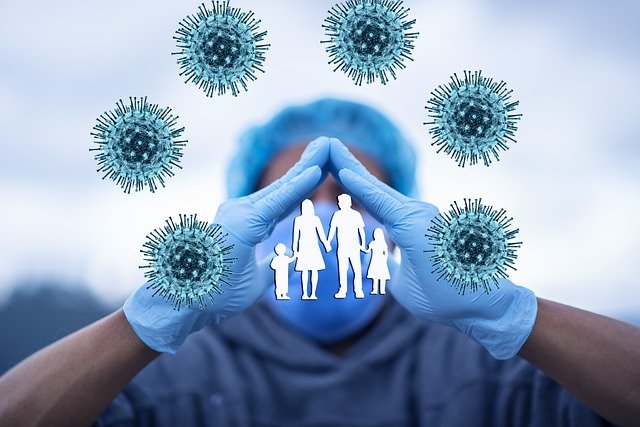Infectious-Disease Watchlist 2026: What Health Experts Are Monitoring Worldwide
As 2026 approaches, health experts are tracking a mix of persistent infections and emerging threats shaped by travel, climate shifts, urbanization, and conflict. From respiratory viruses to mosquito-borne diseases and antimicrobial resistance, the global picture is complex but clearer than in previous years thanks to better surveillance, data sharing, and cross-border collaboration.

The coming year brings a familiar but evolving roster of infectious risks. Health agencies are focusing on diseases that spread quickly, strain health systems, or pose pandemic potential. Renewed attention is also going to vaccine-preventable illnesses that have reappeared where coverage fell. While the list varies by region, common priorities include respiratory pathogens, vector-borne infections, waterborne outbreaks, and drug-resistant organisms. The goal is not to predict the next crisis but to improve readiness, detection, and response across settings.
This article is for informational purposes only and should not be considered medical advice. Please consult a qualified healthcare professional for personalized guidance and treatment.
The Global Health Landscape Entering 2026
Global mobility is back to near pre-pandemic levels, creating efficient pathways for pathogens while also enabling faster outbreak investigation. Climate variability is expanding habitats for vectors like Aedes and Anopheles mosquitoes, contributing to larger and more frequent waves of dengue and localized malaria transmission. Urban density, humanitarian crises, and strained water and sanitation infrastructure continue to drive cholera and other enteric diseases. At the same time, routine immunization gaps have allowed measles and polio to regain a foothold in some areas. Strengthening laboratory networks, genomic sequencing capacity, and real-time reporting remains central to detecting unusual clusters early and limiting spread.
Top Diseases Health Agencies Are Watching Closely
Respiratory viruses remain prominent: SARS-CoV-2 variants, seasonal influenza lineages, and RSV can co-circulate, leading to surges in hospital demand. Avian influenza (notably H5 strains) is under close observation for spillover events. In hemorrhagic fevers, Ebola and Marburg require rapid case finding and safe care pathways when sporadic outbreaks occur. Mpox continues to be monitored for transmission patterns and vaccine access. Vector-borne threats include dengue, chikungunya, Zika, and malaria, with special attention to insecticide resistance and new vector introductions. Waterborne diseases such as cholera can escalate quickly where sanitation and clean water access are disrupted.
The Return of Vaccine-Preventable Illnesses
The reappearance of measles, polio (especially circulating vaccine-derived poliovirus), and diphtheria in some regions highlights the consequences of disrupted immunization services. Measles can escalate rapidly when community coverage falls below herd immunity thresholds, while polio eradication efforts require uninterrupted campaigns and high-quality surveillance for acute flaccid paralysis and environmental detections. Closing immunity gaps—through catch-up campaigns, routine childhood vaccination, and targeted outreach to underserved groups—remains a core priority. Clear risk communication and community engagement are essential to address misinformation and rebuild trust in vaccines, which directly reduces hospitalizations and mortality from preventable diseases.
Tracking “Disease X”: Preparing for the Unknown
“Disease X” represents the recognition that a novel pathogen could emerge with pandemic potential. Preparedness focuses on platform approaches: scalable diagnostics, flexible vaccine technologies, broad-spectrum therapeutics, and robust data pipelines. Early-warning systems that integrate clinical signals, wastewater monitoring, and genomic surveillance help flag anomalies quickly. Scenario-based planning and simulation exercises improve coordination across public health, healthcare, and essential services. Investments in infection prevention and control, surge staffing, and supply chain resilience can blunt the impact of both known and unknown threats. Ultimately, the same systems that manage seasonal outbreaks create the foundation for a rapid response to a new pathogen.
Prevention, Preparedness, and Global Cooperation in 2026
Reducing risk depends on proactive measures. Core actions include maintaining routine immunization, improving ventilation and masking guidance for high-risk settings during surges, and ensuring timely antiviral and antibiotic stewardship. Strengthening primary care, laboratory quality management, and cross-border data exchange supports faster detection and response. For vector-borne diseases, integrated vector management—environmental control, community engagement, and targeted insecticide use—remains key. Public health communication should be transparent, culturally attuned, and multilingual to reach diverse communities. Collaboration among governments, universities, NGOs, and local services in your area enables shared situational awareness and coordinated action, especially where health systems face concurrent emergencies.
What to Watch by Region in Broad Terms
Risk profiles differ by geography. In tropical and subtropical zones, dengue and other arboviruses are major concerns alongside cholera during rainy seasons. In temperate regions, winter respiratory waves dominate, with occasional zoonotic spillover events requiring close monitoring. Areas experiencing conflict or displacement face elevated risks of measles, polio, and waterborne outbreaks due to disrupted services. Border regions and travel hubs are focal points for surveillance, contact tracing readiness, and traveler health information. Across all settings, antimicrobial resistance intersects with many diseases, complicating treatment and heightening the need for stewardship, rapid diagnostics, and reliable access to essential medicines.
Conclusion
The 2026 infectious-disease watchlist reflects both persistent challenges and evolving realities: mobility, climate pressures, and health system resilience. Progress in surveillance, vaccines, and clinical tools has improved detection and care, yet gaps in coverage, infrastructure, and trust sustain risk. Maintaining readiness through prevention, preparedness, and cooperation helps limit disruption from both familiar pathogens and the unforeseen.




